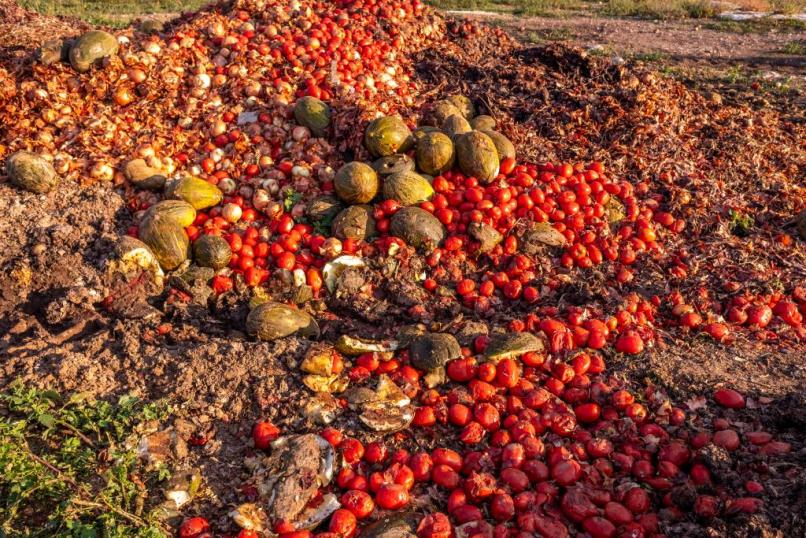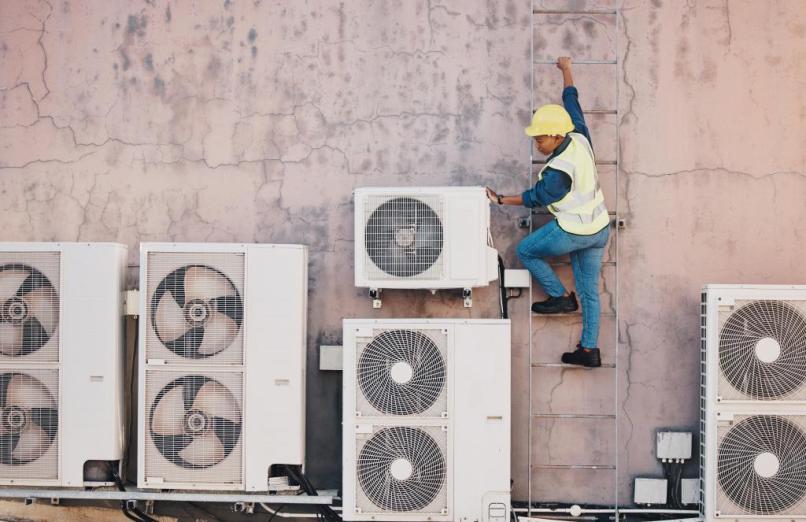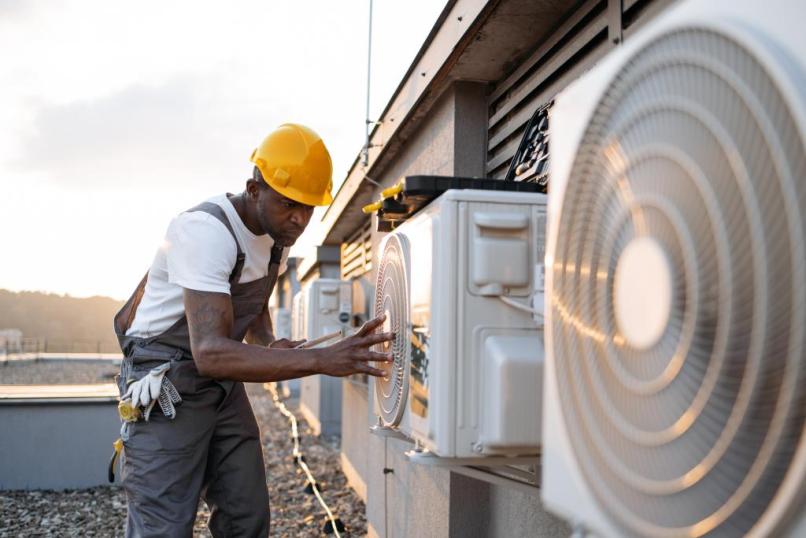Kenya’s cooling challenges and opportunities
This section offers an overview of the three critical sectors where cooling and cold chain systems are essential in Kenya, along with the challenges currently faced and potential opportunities in each sector: 1) Food, Nutrition, and Agriculture, 2) Health Services and 3) Human Comfort and Safety in the built environment, which encompasses cities and buildings. Additionally, other significant cooling needs in Kenya are highlighted.
Food, nutrition and agriculture
Sustainable cooling and cold chain infrastructure and services can play a crucial role in reducing food waste, enhancing agricultural productivity, and combating hunger in Kenya. Annually, 40 percent of agricultural produce in Kenya is lost due to inadequate storage and transportation [5], exacerbating hunger and food insecurity, which affects an estimated 25 percent of the population [6].
Kenya’s agricultural sector, contributing 33 percent of GDP and employing 40 percent of the total population, including over 70 percent of the rural population [7], presents a significant opportunity for the development of sustainable cooling and cold chain services. Such development could reduce post-harvest losses, improve food safety and security, quality, and nutritional value, and enhance market access, ultimately improving the economic well-being of farmers. The market opportunity for cold chain infrastructure is projected to reach USD 2.1 billion by 2030 [8], with investment encouraged by the National Climate Action Plan (NCAP) and the Agricultural Sector Transformation and Growth Strategy 2019–2029. Focusing on small-scale farmers, fisheries, and traders can improve livelihoods and ensure equitable access to opportunities, addressing challenges related to financing and technical support for cooling systems.
Currently, Kenya’s fragmented cold chain infrastructure primarily serves high-value exports like flowers, leaving local produce such as fish in Homa Bay, dairy in Kiambu, and poultry in Turkana vulnerable to losses. Initiatives like Tawi Fresh are investing in cold chain services to enhance agricultural value chains, increase incomes, create jobs, and foster enterprise growth. However, challenges persist, including inconsistent policies and standards, low awareness of the benefits of cold chain services, high costs of cooling appliances for small-scale farmers, limited access to financial credit and fiscal measures, and a shortage of trained technicians and after-sales support. Addressing these challenges and providing more accessible financing solutions are essential to the growth of the sector.

Health Services
Cold chains are essential for the safe transport and storage of vaccines, blood products, and other medical supplies, particularly in regions with high temperatures where maintaining the integrity of these supplies is crucial for public health. However, the expansion of Kenya’s vaccine cold chain faces significant challenges due to unreliable electricity at public health facilities and insufficient logistics infrastructure. While residential electricity access increased from 52 percent to 70 percent between 2016 and 2019, electricity access at government-operated health facilities only improved marginally from 69 percent to 70 percent from 2016 to 2021. In 2016, 13 percent of these facilities relied entirely on LPG as their main fuel for electricity generation [9] [10]
To address the cold chain challenges, the Ministry of Health has set a goal to equip all facilities with optimal Cold Chain Equipment (CCE) by 2026. The effort began in 2016 with a successful application to Gavi’s Cold Chain Equipment Optimization Platform (CCEOP) and a World Bank loan, resulting in the deployment of 3,082 new refrigerators, 20 percent of which are solar-direct drive (SDD) units. To date, 8,342 refrigerators have been deployed, yet the challenge of expanding and maintaining this equipment persists. [11]

In addition to vaccine cold chains, effective heat mitigation and cooling in healthcare facilities are crucial for improving patient care and recovery, particularly in hot regions. Communities in Kilifi, Kenya reported that extreme heat adversely affects women's health during pregnancy, labour, and the postpartum period, with hospitals being described as "unbearably hot”. [12] Such an environment can adversely affect healthcare workers ability to provide patients care as well. [13] This highlights the importance of integrating sustainable cooling solutions not only for medical supply preservation but also for enhancing healthcare outcomes by addressing heat exposure in cities and buildings (see next subsection)
Human Comfort and Safety
Heat mitigation and cooling are critical in Kenya as rising temperatures, heat waves, and the urban heat island effect (UHIE) increasingly impact vulnerable populations, including the elderly, young children, and low-income communities. In urban areas like Mombasa, temperatures can be up to 6°C higher than surrounding regions due to the prevalence of dark concrete and asphalt surfaces. In Nairobi's informal settlements, such as Kibera, thermally poor housing construction leads to exterior temperatures that regularly surpass those in formal neighborhoods, exacerbating health risks. During heat waves, a direct correlation between high temperatures and increased hospital admissions has been observed in Nairobi, Mombasa, and Kisumu [14].

Building design and construction are significant contributors to overheating in Kenyan homes, workplaces, and schools. A survey of 100 schools under the Kenya National Energy Efficient and Conservation Strategy project revealed widespread overheating issues, often worsened by exposed iron sheet roofing that absorbs solar radiation and insufficient natural ventilation. Although evidence from developing countries is limited, frequent hot days can negatively affect long-term learning outcomes. [15] [16]
Iron roofs are common in housing across Kenya but tend to trap heat, while green or thatched roofs offer a cooler alternative. A study in Kiambu, Kenya, demonstrated a significant temperature reduction in a test building, from 48.64°C to 31.85°C, after incorporating passive cooling features, including a green roof and walls coated with light-colored, heat-reflective paint. [17] Given that the human body struggles to regulate itself at a wet-bulb temperature of 35°C, such temperature reductions can be lifesaving.

Ownership of cooling appliances is increasing in Kenya; however, 90 percent of air conditioners on the market are low-efficiency models [18], which not only increases energy demand, emissions and costs for the consumers, but also stresses the power grids. This underscores the need for coordinated efforts to make Kenya’s cities, communities and buildings cooler through strategies to reduce urban heat islands effects, adaptation measures for the heat-vulnerable populations, and accelerating access to energy efficient and lower climate-impact cooling products.
Other Cooling Needs
Beyond the high-impact cooling sectors described above, cooling services are essential for other industries in Kenya, including industrial and commercial needs such as metalworking, chemical and pharmaceutical sectors, textile and tannery operations, paper mills, plastic and rubber processing, and increasing and expected needs such as data centres, power and hydrogen generation. For example, Kenya's expanding network of around 13 data centres, including the NBO1 Nairobi Data Centre, requires advanced cooling technologies to manage the substantial heat generated by servers. In the power sector, deployment of nuclear units (the country's first nuclear power plant is planned in Kilifi and Kwale) will generate significant heat that requires effective cooling solutions in addition to getting cooling from water nearby.
Notes and references
[5] Mwaniki, F.N., Nyamu, F.K. (2022). Reducing Food Loss in Kenya for a Sustainable Food Future. In: Leal Filho, W., Kovaleva, M., Popkova, E. (eds) Sustainable Agriculture and Food Security. World Sustainability Series. Springer, Cham.
[6] Mwaniki, F.N., Nyamu, F.K. (2022). Reducing Food Loss in Kenya for a Sustainable Food Future. In: Leal Filho, W., Kovaleva, M., Popkova, E. (eds) Sustainable Agriculture and Food Security. World Sustainability Series. Springer, Cham.
[7] Food and Agriculture Organization of the United Nations (n.d). Kenya at a glance, Retrieved August 16 2024.
[8] Energy for Efficiency Coalition (March, 2023), Assessment of the Cold Chain market in Kenya
[9] Kenya National Cold Chain Inventory, 2016 and 2021
[10] https://data.worldbank.org/indicator/EG.ELC.ACCS.ZS?locations=KE
[11] https://www.seforall.org/data-stories/expanding-the-vaccine-cold-chain-in-kenya#1
[12] F. Scorgie, A. Lusambili, S. Luchters, P. Khaemba, V. Filippi, B. Nakstad, J. Hess, C. Birch, S. Kovats, M.F. Chersich, “Mothers get really exhausted!” The lived experience of pregnancy in extreme heat: Qualitative findings from Kilifi, Kenya, Social Science & Medicine, Volume 335, 2023
[13] Quartucci, C., Wibowo, R., Do, V. et al. Assessment of subjective well-being of healthcare workers in response to heat and personal protective equipment under controlled conditions using a standardized protocol. J Occup Med Toxicol 19, 16 (2024).
[14] Kimutai et.al (2022) Identification of local heat thresholds and related health impacts: The case of Nairobi, Mombasa, Kisumu Cities in Kenya.
[15] Park, R. Jisung, Joshua Goodman, Michael Hurwitz and Jonathan Smith. 2020. "Heat and Learning." American Economic Journal: Economic Policy, 12 (2): 306–39.
[16] Garg et al. (2020). Temperature and Human Capital in India, Journal of the Association of Environmental and Resource Economists, Volume 7, Number 6.
[17] https://hrcak.srce.hr/file/391738
[18] IEA (2023), Energy Efficiency for Affordability Improving people’s lives through delivery of a modern, sustainable energy system in Kenya.